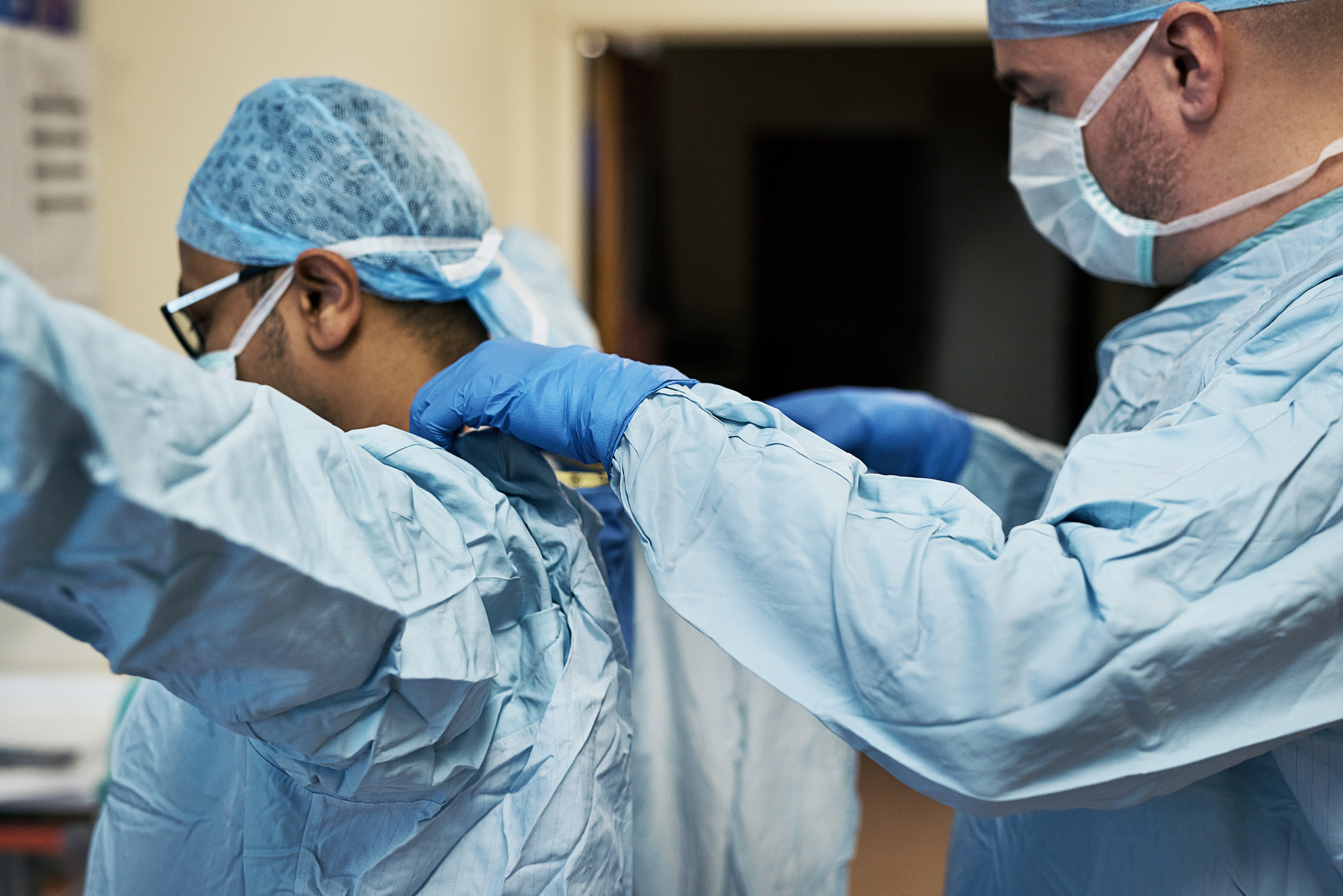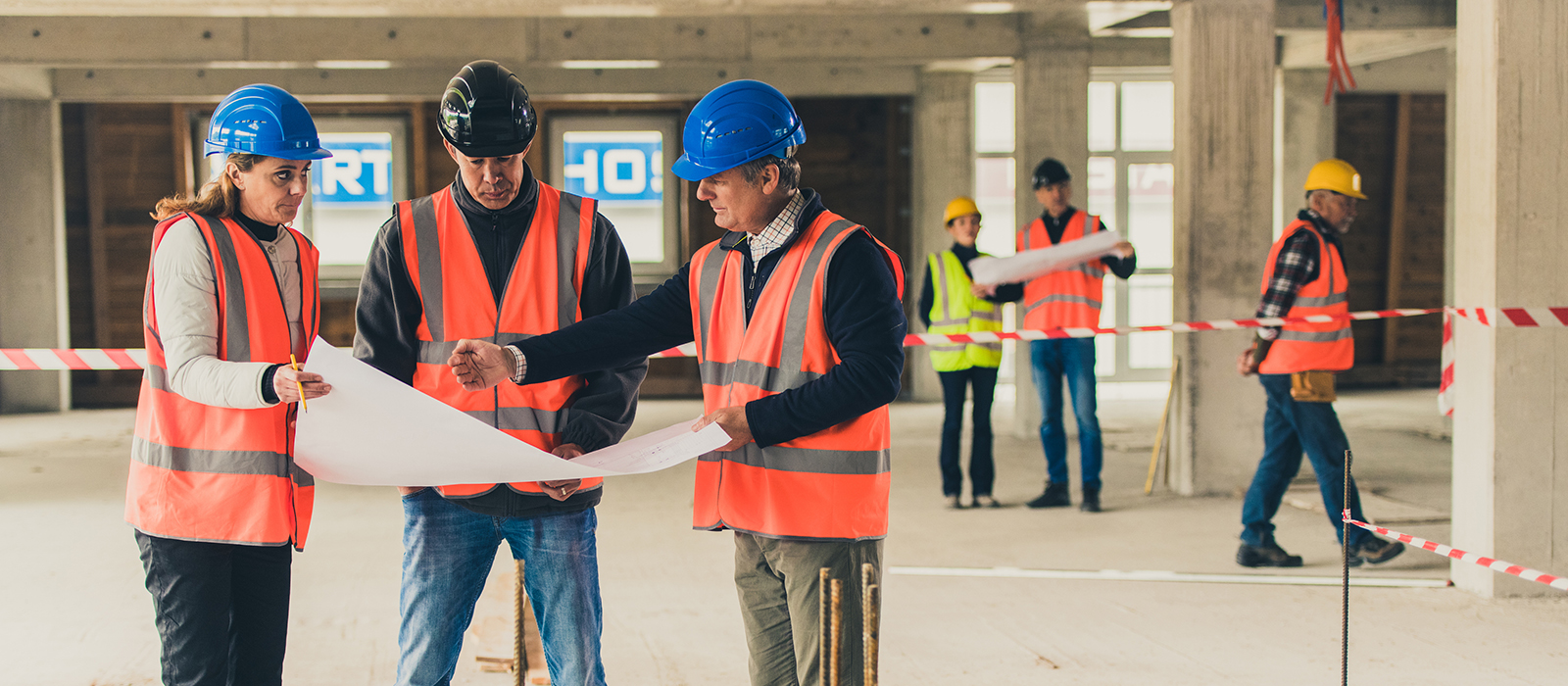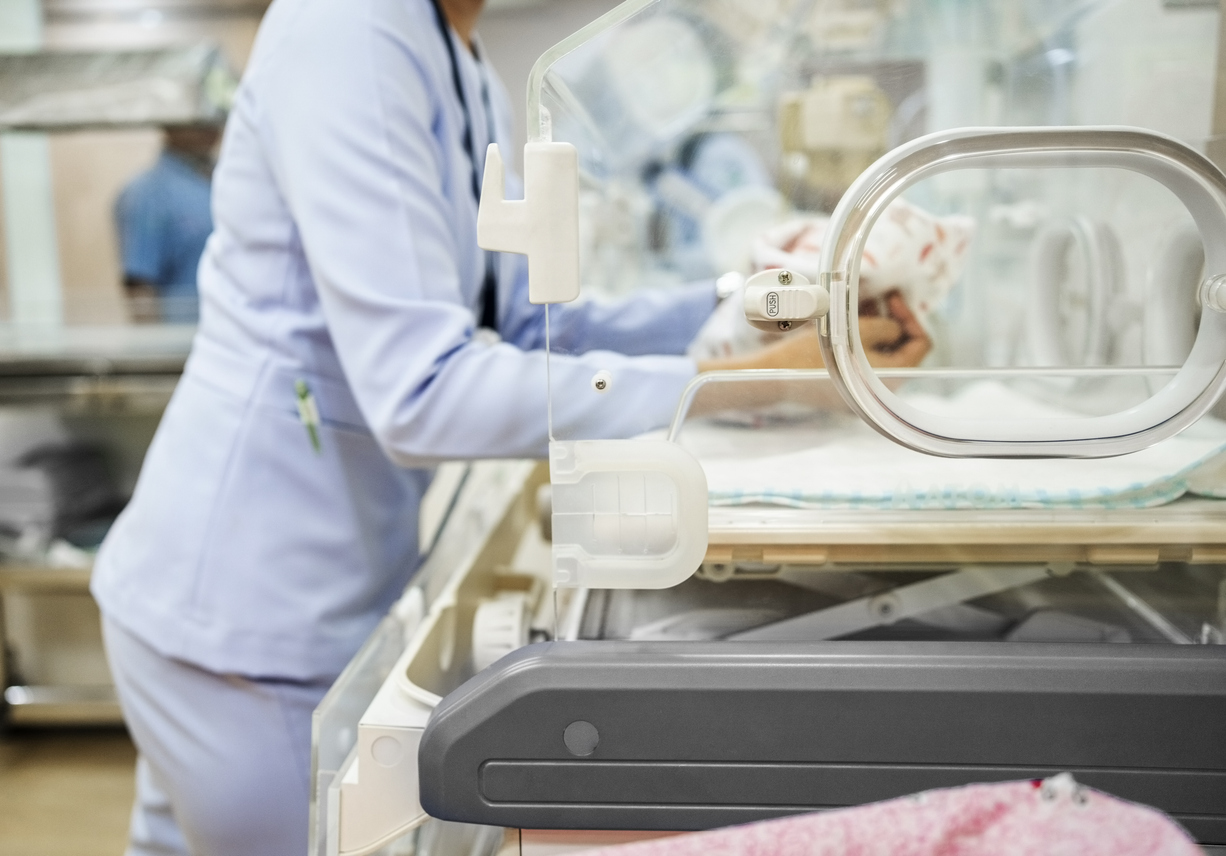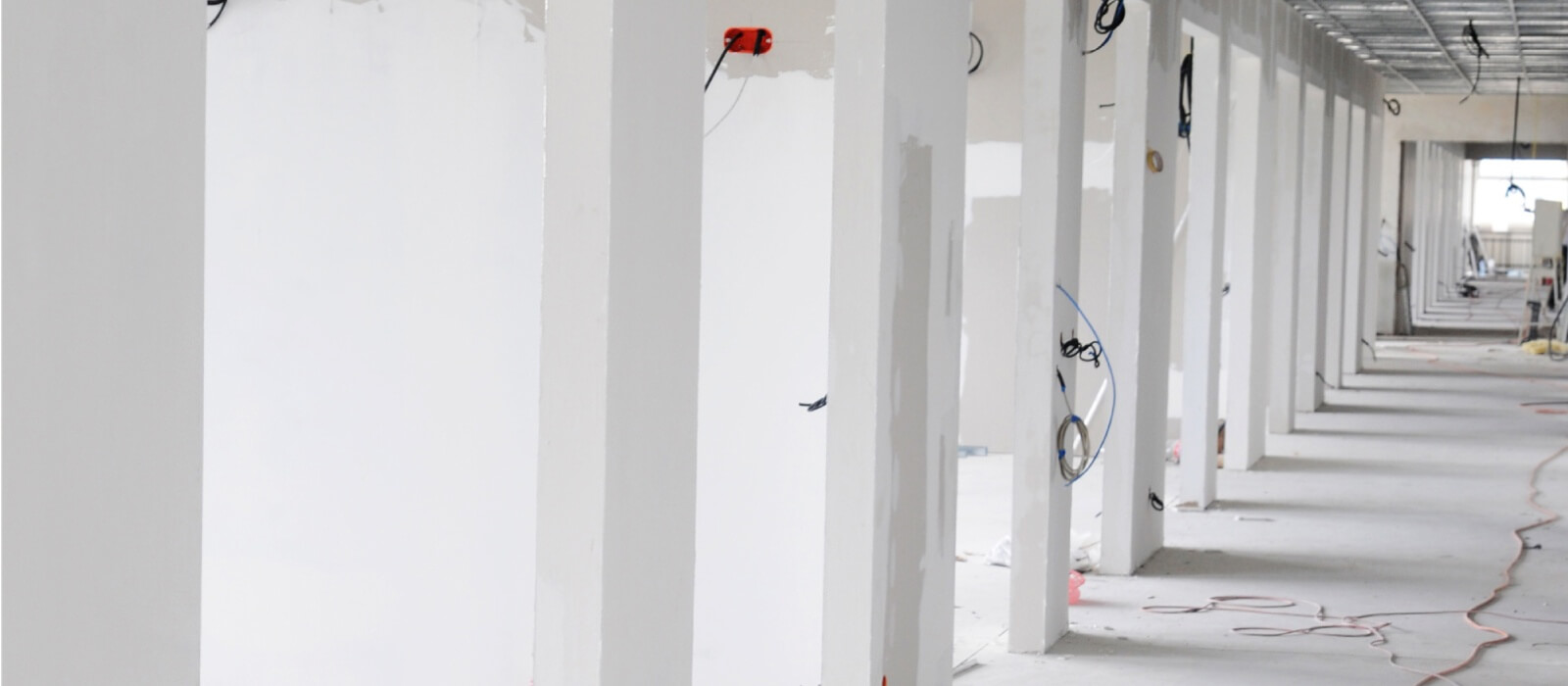Six Common Mistakes When Donning and Doffing PPE that Could Lead to COVID-19 Infections

As of June 12, 2020, the Centers for Disease Control and Prevention (CDC) estimated that approximately 75,000 cases of COVID-19 were healthcare providers in the US. Healthcare providers are on the front lines and are at high risk of infection. Personal protective equipment (PPE) is paramount in helping to protect them from infection. Yet, PPE is the least effective of the controls (engineering controls) within the National Institute for Occupational Health & Safety’s (NIOSH) Hierarchy of Controls. If not properly trained on the use of PPE, or if proper practices lapse, there is the risk of cross contamination that could result in infection from the SARS-CoV-2 virus.
Based on direct observation of healthcare providers treating COVID-19 patients in multiple hospitals, six common mistakes during the donning and doffing processes have been identified that could result in cross contamination and increased risk of infection from the SARS-CoV-2 virus.
1. Not Performing “Seal Check” On N95 Respirator
In order for an N95 respirator to effectively protect the wearer, a “seal check” must be performed every time it is donned. Given the pace of the clinical operations, healthcare providers often rush through the donning process and some may not realize that the seal check needs to be done each and every time they put on their N95. This is likely because many healthcare providers are not accustomed to routinely wearing N95s, so this is new to them. Also, they are working under strenuous circumstances and trying to assist a large volume of COVID-19 patients.
The seal check involves placing your hands around the respirator and along your face, then breathing deeply in and out to ensure air is not getting through the seal. It may seem like a rudimentary exercise, but it is effective in ensuring the respirator is on properly. A demonstration on how to perform a seal check should be part of the respirator fit testing for healthcare providers. Respirator fit testing should be conducted for each worker when initially receiving the respirator and then annually thereafter (there are exceptions for annual fit testing by Occupational Safety and Health Administration in the current emergency to conserve N95s). It is critical, even in these difficult circumstances, that healthcare providers take the time to perform the seal check to help ensure their safety.
2. Missteps with Personal, Equipment and Hand Hygiene Practices
This may seem obvious, but it is an issue that is still frequently observed. Most are clear on the hand hygiene process before donning PPE; however, a lack of proper hand hygiene has occurred in between doffing steps and after doffing PPE. This includes not washing hands as required “between” doffing steps (per hospital’s policy), after leaving a patient room, and not washing for at least 20 seconds to assure disinfection. Healthcare workers need to be mindful that when doffing PPE, they are touching surfaces that have the potential to be contaminated such as clothing, hair, hair bonnets, masks, face shields, goggles, clean linen storage.
Disinfection of “personal” items brought into patient rooms, such as stethoscopes or portfolios, has been observed by our team as being overlooked.
3. Improper Storage of PPE That Is to Be Reused
In response to supply shortages PPE such as N95s are being reused by many healthcare facilities. Once again, it is during the doffing process and in areas outside the patient room where errors are being made. If an N95 is to be stored for reuse, it should be stored in a container that is able to be closed but vented to allow moisture to escape. Additionally, face shields and goggles are not being properly cleaned and labeled and are not being appropriately stored when not in use. N95s and surgical masks have been placed on counter surfaces rather than in emesis basins.
Please note that the CDC recommended “Extended Use” of N95s, which is the practice of wearing the same N95 respirator for repeated close contact encounters with several patients, without removing the respirator between patient encounters as a favored practice over N95 “Reuse”. Reuse is the practice of using the same N95 respirator for multiple encounters with patients but removing it (doffing) after each encounter. Although many healthcare facilities have had to implement PPE Reuse, EH&E aligns with the CDC and recommends “Extended Use” of N95s as a preferred practice rather than Reuse.
4. Layering Additional, Unnecessary PPE. More Isn’t Always Better.
Understandably healthcare providers are very concerned about contracting COVID-19 and in turn infecting family members. This has resulted in some wearing additional PPE that is not required. In some cases, too much PPE can be more hazardous than good. For example, some are wearing a surgical mask over the N95 respirator. If the user is treating the surgical mask as part of the N95 and wearing it only with the N95, it may not present additional risk. However, the doffing process presents the opportunity for errors that can result in cross contamination. If the user later puts the surgical mask on without the N95, there is the potential for contamination since the inside of the mask was touching the outside of the potentially contaminated N95. Also wearing a mask on top of the N95 can make breathing that much more difficult without any real added benefit based on current guidelines.
5. Limited or Inadequate Training and Support for Outpatient Staff
As hospitals and healthcare organizations begin to increase the amount of outpatient and ambulatory care, it is important to recognize that staff within outpatient and ambulatory care settings are less accustomed to wearing specialized PPE, especially N95 respirators. Specialized training and observation-based auditing should be conducted for staff who are wearing an increased level of PPE. In-person training, video-based training and signage are helpful in these settings, but it is important that the training content is customized to the outpatient setting. All too often the training assumes an inpatient setting and there can be important differences such as which PPE to wear, the availability of PPE and storage locations.
6. Culture Matters – Openness to Input on Whether it is Being Done Right
Healthcare providers will need to look out for each other. There has to be a culture where it is routine to provide helpful input to others to correct missteps. During the donning process there are no mirrors available so that an individual can check to make sure they have properly put on PPE. Also, the use of PPE “spotters” are less common than during the Ebola outbreak. Healthcare providers may need to rely on other staff to tell them when they haven’t done it correctly. You may not realize that your gown is not fully covering your backside or that your face shield is off-center. Your coworkers can help.
An environment where it is part of the process to give and receive corrections and helpful reminders to perform an N95 seal check, hand hygiene or disinfection of a face shield will help safeguard against cross contamination, and possibly transmission of disease.
What Can Hospitals Do to Address these Issues?
An effective, OSHA-compliant Respiratory Protection Program that provides proper training and confirms competency is first and foremost. For many healthcare workers the use of PPE such as N95 respirators and face shields is new. Training should include hands-on demonstrations on the proper donning and doffing procedures. Practicing these procedures in the classroom setting is helpful. If you are requiring staff within outpatient and ambulatory care settings to wear an increased level of PPE, be sure that training is conducted for these staff and the training is customized to their setting.
When healthcare workers need to perform these procedures while actually “on the job” there can be a lot of distractions that could lead to missteps. Enlisting a qualified specialist to observe healthcare workers while they are working is enormously beneficial. The specialist can point out errors and provide recommendations for improvement, allowing staff to learn from each other.
An effective “safety culture” is critical. One that encourages open discussion when opportunities for improvement are observed, whether big or small.
Healthcare workers are our frontline and it’s vital that they have the equipment and leadership support needed to perform their job safely and prevent the risk of infection while treating and caring for COVID-19 patients.
EH&E offers qualified, experienced professionals to perform respirator fit testing and customized training. Contact us today for help.
Subscribe
to our blog
"*" indicates required fields




